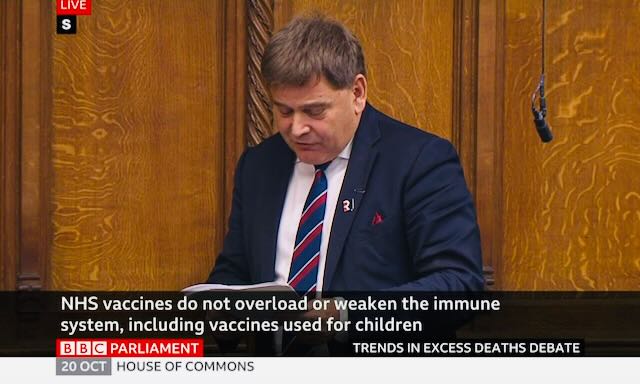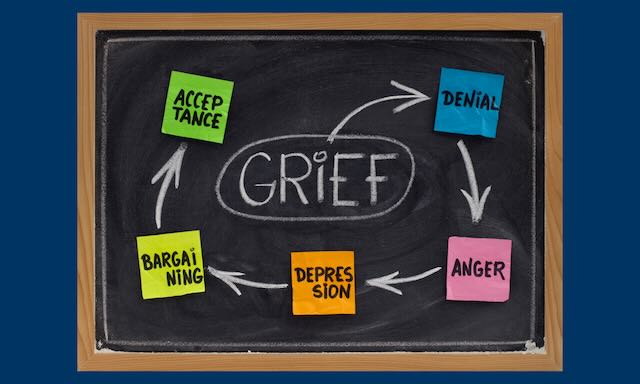Pandemic or Scamdemic? Was there ever a virus at all – wet meat market or lab-leaked or just mislabelled flu or none of the above? And does it matter if we are all agreed that it was the response that killed?
Mortality data

What really caused covid deaths?
There is something rather odd about the fatality rate for covid in hospitals. NHS England have published data on covid deaths and hospitalisations (which includes both admissions and diagnoses of inpatients).

Have ONS admitted to problems with their data?
There have been numerous papers and much public health data where the vaccinated have been described as unvaccinated for two or three weeks which causes a double bias in the data. The higher rate of covid in the first few weeks after injection amplifies the problem.

The new rites of passage
It has become almost impossible to die in this country without first being injected. No longer is the priest by the bedside reading last rites, it’s the vaccinator.

Covid-19 Response and Excess Deaths
On 18th April, Andrew Bridgen finally secured a full length debate on this vexed topic, the original text of which is available here. Full length in theory, but shortly before the debate was due to begin, the deputy Speaker told him he only had 15 minutes instead of the 30 minutes he had prepared. After a complaint to the Speaker’s office the compromise was 20 minutes.

Covid-19: Response and Excess Deaths
You can watch the entire debate on Parliamentary TV archives, Timestamp: 14:33:25. Click on this Timestamp from the pull down menu on the righthand side of the web page.

Too many deaths are to be expected
Mathematical modelling has a role to play in predicting deaths but as with all modelling it needs to be used very carefully. We have seen modellers who make the assumption that everyone was susceptible to covid then producing dramatic graphs that show everyone would catch it. We’ve also seen modellers who assumed masks worked then producing dramatic graphs of how they could minimise covid. Of all modelling crimes, putting your conclusion into your assumptions is surely the worst.

Trying to bargain away the excess deaths problem
Politicians fancied themselves as heroes in 2020. They were saving lives. Having played doctor with the population they are now being shown the fallout and it is not pretty. They are working through the stages of grief.

Death notices tell a different Covid story
Members of HART were struck by this analysis from Dr Simon and have published it here with his permission: It is a very common practice to write a death notice in New Zealand after a loved one has passed away. This practice is so common in New Zealand that frequently more death notices get published through Legacy.com than the number of deceased, as some people publish more than one death notice for the family member that passed away.

Examining the ONS all-cause mortality data
It is not necessary to have a degree in statistics to understand that something is very amiss with public data reporting, with lack of transparency being the most egregious issue. The taxpayer funds the very existence of the ONS. We should have access to the information that we are paying to be collected.

Excess mortality in England post Covid-19 pandemic
Lancet article co-authored by Sarah
Caul, MBE, finally acknowledges that excess deaths are a problem but is recommending a timely granular analysis rather than doing one.

How not to handle a data leak
A New Zealand health ministry employee was arrested for leaking records on vaccination status and death from the government database. He faces up to seven years in prison. The government admits that there has been no privacy breach as the data was anonymised yet, by arresting him they have confirmed the veracity of the data and implied they do not want the public seeing it.

Deaths of Scottish babies
Public Health Scotland demonstrated a significant increase in neonatal deaths (in the first month of life) in 2021 but refused to investigate whether it was related to the vaccine because such an analysis “whilst being uninformative for public health decision making, had the potential to be used to harm vaccine confidence”.

Excess Death Inquiry in Parliament House, Australia
On Wednesday October 18th in Parliament House, Canberra, the Australian Medical Professionals Society (AMPS) held an inquiry, addressing the alarming rise in excess mortality in Australia since 2021. This inquiry aimed to uncover the most pressing question: What is causing Australians to die at unprecedented rates? Why has the death rate rocketed?

The scandal of excess death reporting (or lack thereof)
In stark contrast to the 2020 relentless daily death counts, there has been a virtual media black-out on excess deaths since the vaccine rollout.

Trends in Excess Deaths
All our readers will be aware that on October 20th, Andrew Bridgen managed finally to secure a debate on the Excess mortality which is occurring in the UK and across highly vaccinated countries in every continent. In the run up to the debate, HART joined in an open letter to all MPs urging them to attend and similar appeals were made by other groups most of which fell on deaf ears.

Trends in Excess Deaths, 20th October 2023
“We have experienced more excess deaths since July 2021 than in the whole of 2020. Unlike during the pandemic, however, those deaths are not disproportionately of the old. In other words, the excess deaths are striking down people in the prime of life. No one seems to care.”

You have to die of something!
When calling out the excess mortality after the covid vaccination campaign, the claim that Sweden disproves an association with vaccination is frequently raised. Why is it that Sweden has only a small excess, and some claim none when adjusted for age?

